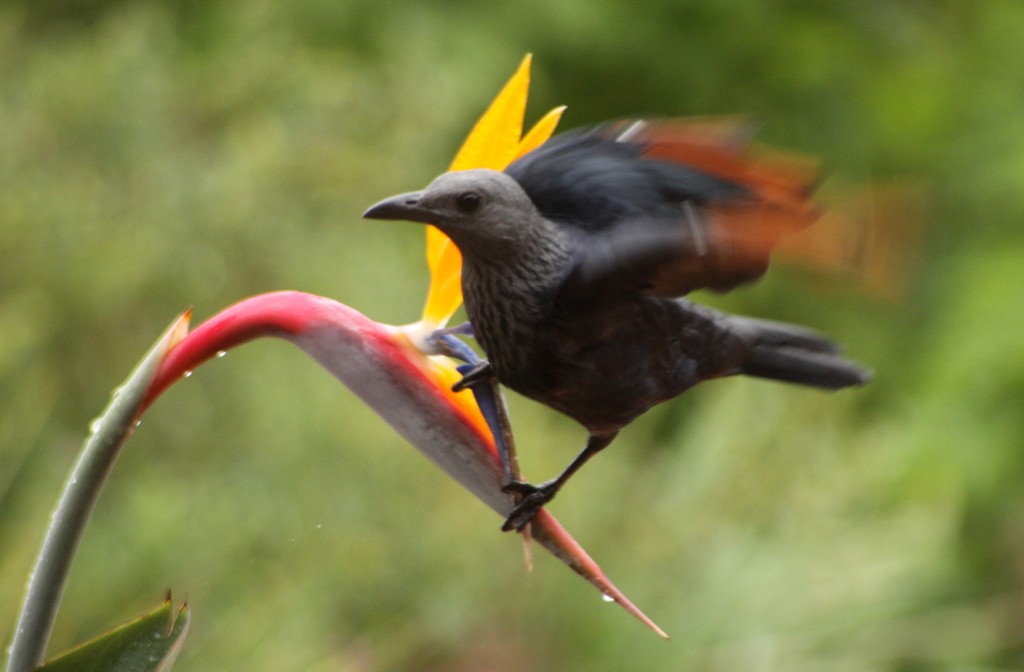Red-winged Starling
A species of Red-winged Starlings and Allies Scientific name : Onychognathus morio Genus : Red-winged Starlings and Allies
Red-winged Starling, A species of Red-winged Starlings and Allies
Botanical name: Onychognathus morio
Genus: Red-winged Starlings and Allies
Content
Description People often ask General Info
Description
The male of this 27–30-centimetre (11–12 in) long starling has mainly iridescent black plumage, with chestnut flight feathers, which are particularly noticeable in flight. The female has an ash-grey head and upper breast. The juvenile resembles the male, but is less glossy than the adults, and has brown rather than dark red eyes. The Ethiopian subspecies O. m. rupellii is longer-tailed than the nominate form and intergrades with it. This species has a number of whistled calls, but the most familiar is the contact call, cher-leeeoo. This starling may be confused with other similar starling species, such as its sister species the pale-winged starling. The difference between the two is that the red-winged has rufous primaries while the pale-winged has whitish primaries edged with orange. The pale-winged has a bright red or orange eye, while the red-winged's is dark, almost black. Only the female of the red-winged has a grey head. 
Size
30 cm
Colors
Black
Green
Red
Gray
Blue
Orange
Life Expectancy
7.5-19 years
Nest Placement
Cliff
Feeding Habits
Red-winged Starling consumes a varied omnivorous diet, eating seeds, berries, nectar, invertebrates, and scavenges carrion and human scraps. They exhibit selective feeding on robust florae like Aloe and favor large fruit such as figs and marulas. Red-winged Starling also gleans ectoparasites from large mammals, showing opportunistic feeding behavior.
Habitat
Red-winged Starling is a versatile species, occupying a range of habitats from forested areas and grasslands to wetlands and fynbos. Originally associated with rocky outcrops and mountainous regions, red-winged Starling has adapted well to urban environments, taking advantage of tall buildings for nesting in a manner similar to its natural cliffside homes. It thrives up to 2500 meters in elevation, and even higher in certain regions, while generally avoiding arid zones and the lower eastern coastal areas.
Dite type
Omnivorous
People often ask
General Info
Feeding Habits
Bird food type
Distribution Area
The range runs down eastern Africa from Ethiopia to the Cape and Zwa-Zulu Natal in South Africa. This species has a wide habitat tolerance. It may be found in forest, savannah, grassland, wetlands, fynbos, farmlands and commercial plantations, as well as urban centres. It is now common in many urban areas, due to the similarity between the structure of tall buildings and houses as nest sites with the cliffs of its original habitat. It may also nest in residential areas, breeding in roofs and apertures and up house eaves. 
Species Status
Not globally threatened.
